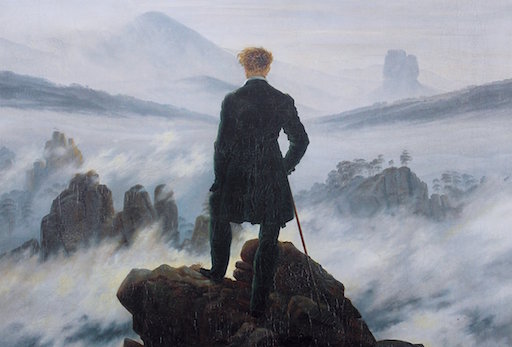
Caspar David Friedrich - Wanderer above the sea of fog
At the philosophy group I attend, we were discussing the final chapter of Objectivism: The Philosophy of Ayn Rand (OPAR) about her views on art. At first glance, the chapter appears a cursory postscript to the book–an obligatory nod to esthetics since it is one of the five branches of philosophy.
But art–including literature–is not just an afterthought to philosophy. It’s the main show, the primary delivery vehicle of important ideas.
Case in point, how many people have read Atlas Shrugged or The Fountainhead compared to OPAR? No doubt it’s a 100 or even a 1,000-fold difference in favor of the novels. In fact, none of us would even care about OPAR if something about Atlas Shrugged or The Fountainhead hadn’t captured our imagination first.
What exactly do we mean by art? Ayn Rand defines art as: a selective re-creation of reality according to an artist’s metaphysical value judgements.
“[Art] concretizes man’s fundamental view of himself and existence,” she says, “Art brings man’s concepts to the perceptual level of his consciousness and allows him to grasp them directly, as if they were percepts.”
In other words, art gives you something to look at in the real world and say, “look this is what I mean.”
For example, instead of simply saying that integrity and individualism are ideals, Ayn Rand shows us Howard Roark–the ultimate individualist who holds unwaveringly to his principles.
Instead of simply saying “forgive the repentent,” the Bible gives us the story of the prodigal son who returns home. Despite being a spendthrift who squanders his inheritance, his family joyfully receives him. In effect, saying, “this is what forgiving the repentent looks like.”
My favorite painting–Caspar David Friedrich’s Wanderer above the sea of fog, which adorns the top of this post–speaks strongly to my wanderlust and sense of adventure. It shows a well-dressed man perched above a rugged and half-exposed landscape as if to say, “exploring all this majesty is what life is really all about.”
Art changes the world because it allows the artist not just to tell us what the world is or could or ought to be like, but to inspire us with a vision of that world.
{ 0 comments… add one now }